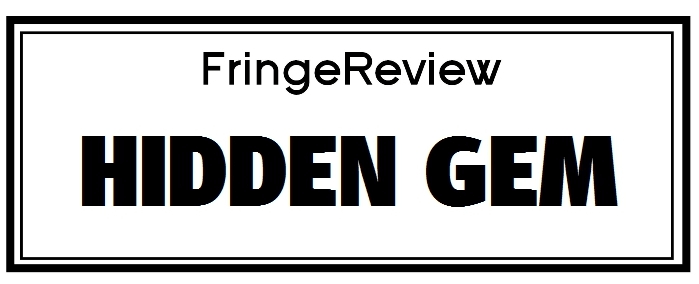FringeReview UK 2019
Plaegan Piano Trio
Plaegan Piano Trio

Genre: Live Music, Music
Venue: Chapel Royal, North Road, Brighton
Festival: FringeReview UK
Low Down
The Plaegan Piano Trio play Haydn’s 1789 E minor Trio and the expansive Brahms’ No. 1 in the unusual key of B major, Op 8 from 1854, in the 1890 revision.
Review
People have been looking forward to this. The Plaegan Piano Trio have been going as a Piano Quartet since 1978 and when their violist retired in 2011, as a trio. Since 2014 they’ve had a new pianist Alan Brown; violinist Helen Sills and cellist Michael Nebe are founder members. The Chapel Royal proves an ideal venue: the right resonance for a trio, and ready audience. They last appeared playing Beethoven’s Archduke Trio 5 months ago.
The Trio play Haydn’s 1789 E minor Trio and the expansive Brahms’ No. 1 in the unusual key of B major, Op 8 from 1854, in the 1890 revision. Brown’s a gently incisive payer, glittering and leading and where necessary more spare accompanying the string-players who enjoy a particular rapport in chromatic eddies and some of the weirder enharmonic passages in the Brahms.
Haydn’s trios are still underplayed. We know his last, the ‘Gypsy’, in G major. But there’s riches to be discovered in one of his commanding genres. E minor is a pretty unusual key too. Even for the 1770s Sturm und Drang (‘storm and stress’) which Haydn was so involved in, and this dates from that sunnier period in the late 1780s, shortly before Haydn’s London period.
The dark Allegro Moderato has remarkable shafts and eddies, as this searching movement navigates chromatic and almost romantic undercurrents beneath a glittering surface. Then the next two movements move into innocent E major. The Andante sounds a little like Haydn’s 1790s Pastoral song in English, ‘My mother bids me bind my hair’; and there’s a similar open-eyed warmth about this far simpler movement. The Rondo features remarkably nimble passage-work on the piano as it drives the strings infectiously. Though the cello has yet to be fully liberated it binds the violin and piano together as they whirl off in more soloistic curlicues.
The Brahms is on a different scale, naturally. B major is pretty rare too for any period before the 20th century. It’s not like B flat, which is traditionally a brilliant key. B is warm, ruminant and yet pristine, as if everything’s beginning. And so it is for Brahms, who nevertheless successfully revised this huge score when brusque and bearded thirty-six years on, in 1890, clarifying its outline. It’s still hefty though and plays at about thirty-five minutes.
The strings are particularly prominent as Brahms welds some remarkable duetting where they’re exposed. The Allegro con brio soars with accelerating tempi from cello and piano and yet still has an inwardness that comes across as the optimism of youth on a huge quest. Even here Brahms’ tendency to build bridge passages so sturdy you could drive a three-ton Bedford truck over them, as Elizabeth Lutyens once put it, is in evidence. and a good thing too. It’s an eventful movement, strong in outline yet so clearly nagging at places – he goes off into G# minor and even E major – Brahms scarcely visited again. Particularly the harmonies, known if at all from some of his minor-keyed works.
The Scherzo in B minor comes across as a spiky march almost. It’s neither particularly fast nor menacing. It’s probing, certainly, but almost a minuet, except for the dotted rhythms that identify it as a quietly strutting thing, confident of its end which is back in B major.
The Adagio is hardest to grasp. We’re back in B major but there’s a cello theme rippling under in G # minor and that’s remarkably nagging. It’s where the string solos are most in evidence, and there’s magical interplay between all the instruments. It’s another of those what-ifs. The older Brahms hasn’t cleared away the essential strangeness of this youthful masterwork, and its sideslips into Lisztian and Wagnerian territory are thrilling and show where Brahms went and didn’t go. But like all Brahms, it can’t be mistaken for anyone but him.
It moves seamlessly into the final Allegro, back in B major for the moment; with its reprise of the yearning opening and its confident brio without the con brio marking. It was the movement Brahms altered most from its original, and there’s quotations too, Schubert (the last movement seems to have one also from Swansongs) and Schumann’s Fantasie Op 17. Schumann had attempted suicide in 1854 and Brahms was clearly paying homage. Though we move to D major, it’s back to B major then B minor to end with. It’s a fascinating homecoming, and soars to its major-minor-keyed triumph with a sense of having won through, but only just.
What a trio. Clean, pristine on the one hand with wonderfully incisive pianism yet able to offset this with strong-playing of an empathy that’s only burgeoned over forty years. Terrific. We’re very lucky to be here.


















































